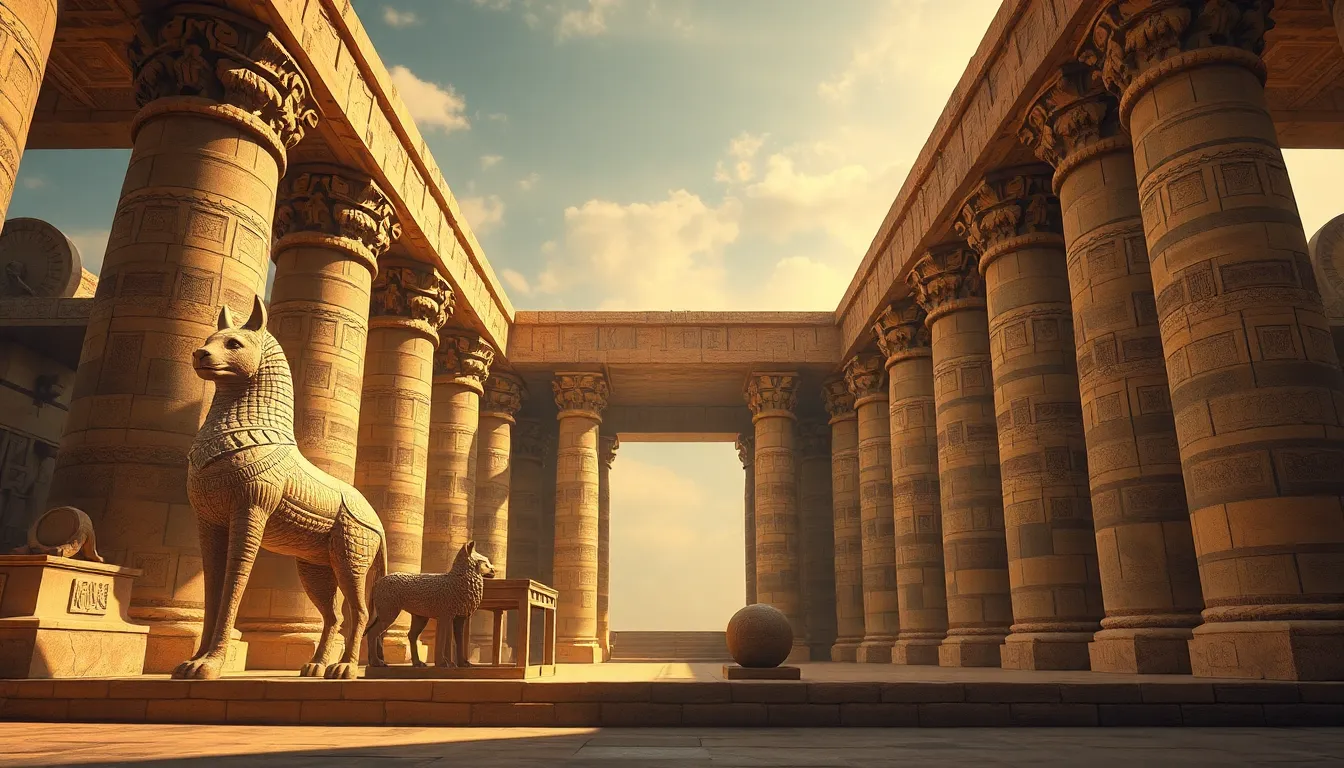The Sacred Animals of Ancient Egyptian Temples
I. Introduction
Animals played an integral role in Ancient Egyptian culture, shaping their religion, mythology, and daily life. The Egyptians revered various animals, associating them with divine qualities and as manifestations of their gods. This article explores the significance of sacred animals within the temples of ancient Egypt, highlighting their symbolic meanings, the deities they represented, and their lasting influence on Egyptian spirituality.
II. The Symbolism of Animals in Ancient Egypt
In Ancient Egypt, animals were not merely creatures of the earth; they were vessels of divine energy, embodying the traits and attributes of gods. The Egyptians believed that animals could bridge the gap between the earthly realm and the divine, serving as intermediaries.
The symbolism of animals in religion and mythology can be understood through:
- Divine representation: Animals were seen as earthly forms of gods, each representing different aspects of life and the cosmos.
- Mythical narratives: Many myths featured animals as central characters, conveying moral and spiritual lessons.
- Protection and guidance: Animals were thought to offer protection to the living and guidance in the afterlife.
These beliefs forged a deep connection between animals and deities, making them vital to the spiritual fabric of Ancient Egyptian society.
III. Major Sacred Animals and Their Deities
Several animals were particularly revered in ancient Egypt, each associated with specific deities:
- The Cat: Bastet, the goddess of home, fertility, and domesticity, was often depicted as a lioness or a domestic cat. She embodied protection, especially over women and children.
- The Falcon: Horus, a major god associated with kingship and the sky, was represented as a falcon. He symbolized power and protection, often depicted soaring high, overseeing the pharaohs.
- The Bull: Apis was a sacred bull worshipped for its strength and fertility. His presence was believed to ensure agricultural prosperity and was associated with the god Ptah.
- The Ibis: Thoth, the god of wisdom, writing, and knowledge, was often represented as an ibis. His association with intellect and the lunar cycle made him a vital figure in maintaining cosmic order.
IV. Temples Dedicated to Sacred Animals
Numerous temples across ancient Egypt were dedicated to these sacred animals, serving as sites of worship and celebration:
- The Temple of Bastet in Bubastis: This temple was a major center of worship for Bastet, attracting thousands of pilgrims during her festival.
- The Temple of Horus in Edfu: One of the best-preserved temples, it highlights the significance of Horus and was a center for rituals related to kingship.
- The Serapeum of Saqqara: Dedicated to the worship of the Apis bull, this complex housed mummified bulls and served as a burial site.
The mummification of sacred animals was a practice that held great significance, as it was believed to honor the animal’s divine nature and ensure its presence in the afterlife.
V. Rituals and Practices Involving Sacred Animals
The worship of sacred animals involved various rituals and practices, reflecting the deep-seated beliefs of the Egyptians:
- Animal worship and offerings: Devotees would bring offerings to temples dedicated to these animals, seeking favor and blessings from the gods.
- Festivals celebrating sacred animals: Large festivals, such as the Bubastis Festival for Bastet, included music, dancing, and feasting, reinforcing communal bonds and religious devotion.
- The role of priests in animal care and rituals: Priests were responsible for the feeding, care, and ritualistic practices surrounding sacred animals, ensuring that they were treated with the utmost respect.
VI. Art and Iconography of Sacred Animals
Art and iconography played a crucial role in the representation of sacred animals in ancient Egypt:
- Depictions in temple reliefs and sculptures: Temples were adorned with intricate carvings showcasing animals alongside their respective deities, reinforcing their sacred status.
- The use of amulets and talismans: Egyptians wore amulets featuring sacred animals for protection and luck, signifying the animals’ divine qualities.
- Analysis of artistic styles and their meanings: The style of artwork often conveyed the significance of the animal, with specific colors and postures indicating their divine attributes.
VII. The Decline of Sacred Animal Worship
Over time, the worship of sacred animals began to decline due to various factors:
- Foreign invasions and cultural changes: As Egypt faced invasions from foreign powers, traditional beliefs were challenged, leading to a dilution of ancient practices.
- Rise of new religious beliefs: The introduction of Christianity and other religions transformed the spiritual landscape, leading to a decline in the worship of ancient deities and their associated animals.
- Legacy of sacred animals in modern Egyptian culture: While the active worship of these animals has ceased, their symbolism endures in modern Egyptian culture, often reflected in art and literature.
VIII. Conclusion
The sacred animals of ancient Egypt offer profound insights into the spirituality and religious practices of one of history’s most fascinating civilizations. Their roles as representations of divine qualities reveal much about the values and beliefs that shaped Egyptian society. The legacy of these sacred animals continues to influence contemporary views on spirituality and mythology.
As we reflect on the importance of these beliefs, we invite further exploration into the rich tapestry of Ancient Egyptian culture and religion, where the lines between the divine and the earthly were beautifully intertwined.




